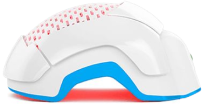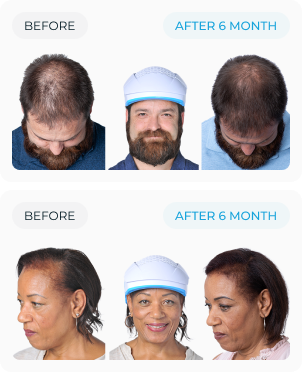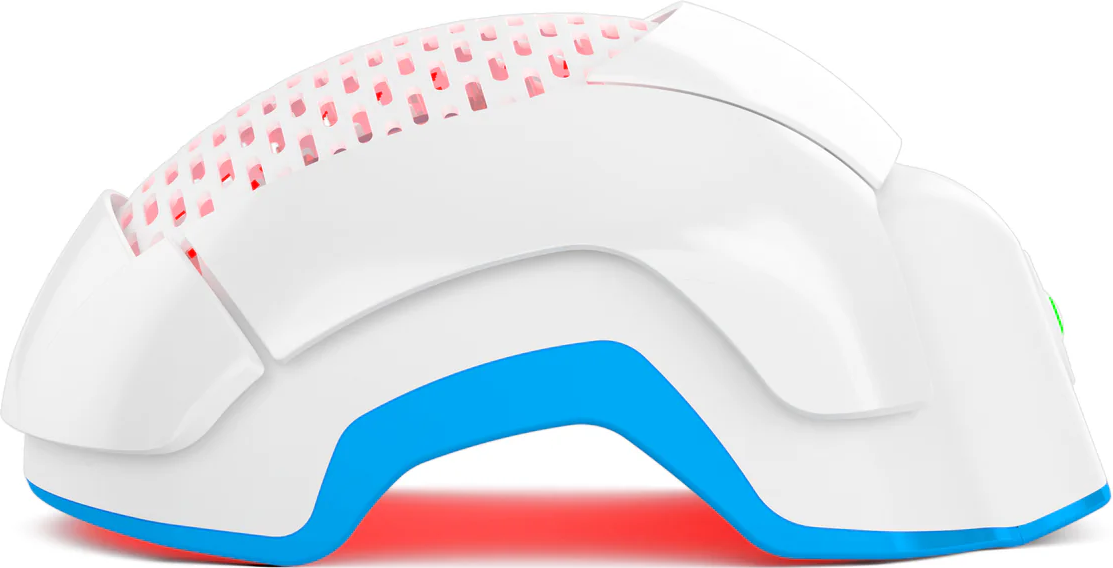Oiling your hair is either a game-changer or a greasy disaster. The line between nourishment and buildup is thinner than your patience when shampoo doesn’t lather. So, how long should you leave oil in your hair?
That depends—on your scalp type, hair thickness, oil choice, and what exactly you think the oil is fixing.
Some oils are in-and-out types (30–60 mins), while others need time to do more than coat your cuticle. But by leaving the wrong oil sitting too long, or by skipping deep conditioning—you’re clogging follicles, trapping heat, and creating the perfect breeding ground for scalp buildup.
Importance of Oiling Hair
Hair oiling isn't outdated — bad oiling habits are. When done right, it can support strand strength, seal in moisture, and make your hair feel like it actually likes you again. But not all oils are the same. Coconut oil, for example, is known as one of the best oils for hair growth because it penetrates the shaft and reduces protein loss. Argan oil is rich in antioxidants and tames frizz without drowning your roots. Jojoba mimics natural scalp oils, making it ideal for balancing sebum. Olive oil softens strands but works better on dry, thick hair.
The benefits of oiling hair come down to biology. Some oils actually enter the shaft, filling in weak spots. Others just sit on top, locking in hydration or softening the cuticle. When you understand oil behavior — instead of dumping whatever smells good on your head — the results go from meh to meaningful. And the key variable is time.
Factors That Determine How Long You Should Leave Oil in Your Hair
1. Hair Type & Scalp Condition
Your scalp isn’t one-size-fits-all. If it’s oily, adding too much oil (or leaving it too long) turns your head into a clogged-up mess. A dry scalp is a green light for longer sessions. Fine hair absorbs less and can get weighed down quickly. Thick, coarse, or high-porosity hair benefits from a longer exposure and heavier oils. Oil treatment duration should be based on your hair's absorption rate, not a random clock or trend.
2. Type of Oil Used
The oil you choose changes everything. Lighter oils like argan and grapeseed sink in fast and rinse out clean. Heavier ones — like castor or coconut — cling harder and take longer to penetrate. The actual oil penetration time in hair varies. Coconut oil can begin penetrating within 30 minutes; castor might need hours. Don’t just time your oiling — match the oil to the job.
3. Purpose of Oiling
Are you going for quick nourishment or deep repair? A pre-shampoo oil treatment needs less time. You’re coating the strands for protection before wash day — 30 to 90 minutes usually does it. If you’re trying to recover from serious dryness or improve elasticity, leave it in longer. Only use overnight oil treatments if the oil requires extra time to absorb into the scalp, and the scalp can tolerate it.
How Long to Leave Oil in Hair Based on Different Situations
1. Short Treatment (30 Minutes – 2 Hours)
This window is ideal for most. It’s long enough for oils like argan, coconut, or almond to penetrate and deliver nutrients — without inviting buildup. For people with normal to slightly dry hair, 30–120 minutes is your safest bet. You’ll get the benefits of oiling hair without triggering scalp rebellion. It’s also ideal as a weekly pre-shampoo routine. You let the oil in, then you rinse it out — without giving it time to overstay its welcome.
2. Overnight Treatment
Overnight oiling works when your scalp plays nice and the oil is right. Castor and coconut benefit from longer contact, but only if your pores can handle it. Sleep with it too often or too heavily and the effects of leaving oil in hair too long show up fast: clogged follicles, itchy scalp, even folliculitis. If you’re going overnight, use a small amount, avoid the roots, and do not do it daily. Your scalp needs breaks — not a sleepover party with castor oil every night.
3. Leaving Oil for More Than a Day: Good or Bad?
Bad. Always. Oil isn’t a leave-in. After 24 hours, it traps dirt, dust, sweat, and sebum — the perfect mix for blocked follicles and irritation. Long-term, this habit can slow growth and throw your scalp barrier off completely. Unless you’re auditioning for the role of “waxy scalp buildup guy,” cut the marination short. Maximum benefit happens early. After that, it’s just grease doing nothing helpful.
Best Practices for Oiling Hair
1. How to Apply Oil Correctly
It’s not just dump-and-rub. Start with a scalp massage with oil using fingertips — not fingernails — to increase circulation and distribute oil. Then work through the lengths, using just enough to coat without saturating. Too much oil blocks follicles and takes forever to wash out. A teaspoon for short hair, a tablespoon for longer hair. More oil doesn’t mean more results — it just means more shampoo later.
2. How to Wash Out Oil Properly
Thick oils don’t leave without a fight. For dense oils like castor, go in with a double-cleansing method. Use a clarifying or gentle sulfate-free shampoo, lather well, and rinse thoroughly. Don’t scrub like you’re sanding a table — focus on the roots. Follow with conditioner if needed. Avoid hot water — lukewarm works best to lift oil without stripping your natural moisture. If you're not rinsing well, you're not helping your hair — you’re suffocating it.
3. How Often Should You Oil Your Hair?
Once or twice a week works for most. More than that, and you’re heading into clog territory. If your hair feels heavy, limp, or your scalp’s constantly itchy, back off. You want oiling to support your growth cycle — not hijack it. Hair that’s already high in natural sebum doesn’t need frequent oiling. But dry or chemically processed hair might need more. The right schedule is personal — but daily oiling is almost never recommended.
Conclusion
So, how long should you leave oil in your hair?
Long enough for it to do its job — not long enough to build a rental property on your scalp. For light oils and normal maintenance, stick to 30 minutes to 2 hours. For deeper repair (and the right oil), overnight once in a while is fine. But anything longer is counterproductive. Know your hair, match your method, rinse properly, and don’t treat oil like a miracle. It works — if you stop misusing it.
























